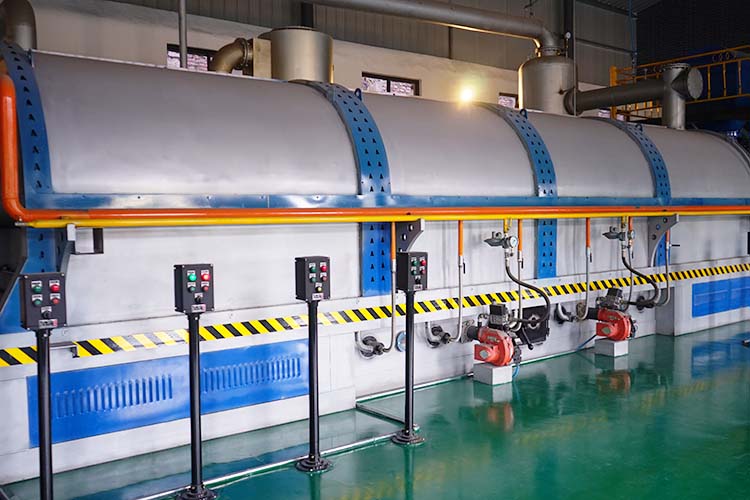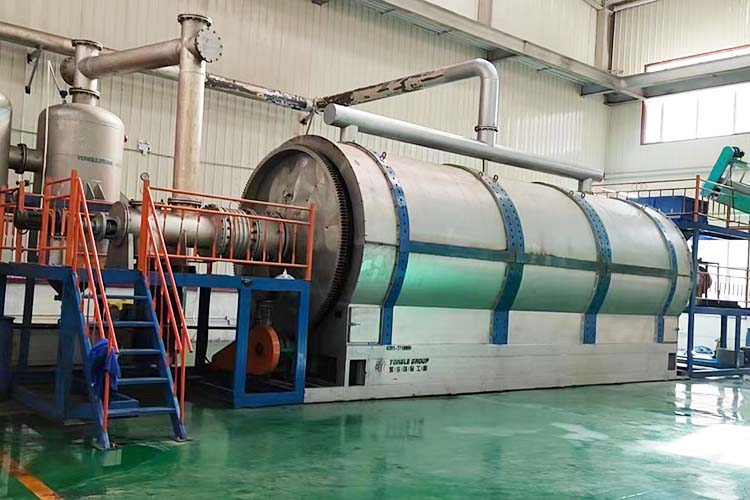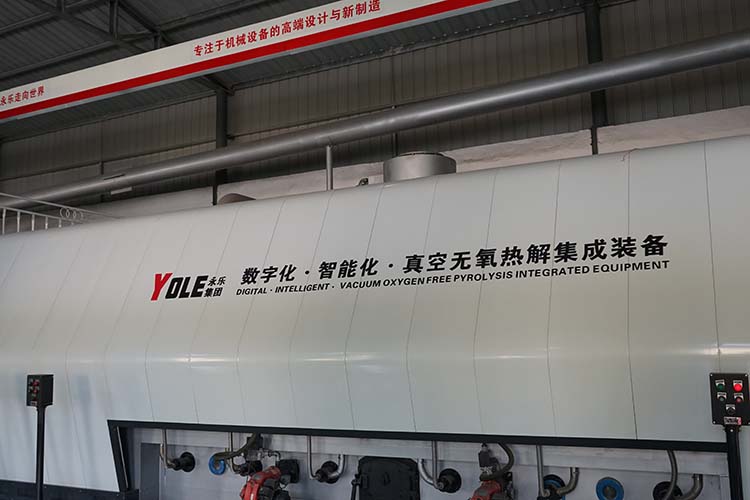 The core technical framework of the medical waste treatment device is based on the principle of waste pyrolysis and gasification, a design concept that precisely addresses the disposal needs of medical waste, which is diverse in form and complex in composition. When medical waste enters the pyrolysis furnace, an oxygen-deficient environment becomes the key condition for triggering material transformation. Inside the pyrolysis furnace, the temperature is controlled within an optimal range, allowing organic waste to undergo a dual process of pyrolysis and gasification: originally complex organic compounds are gradually broken down into combustible gases dominated by CO and CH4, while generating inorganic water vapor, acidic gases, and slag. This process is akin to nature’s "material reconstruction," converting potential pollution sources into usable energy carriers and harmless residues, thus achieving the reduction and detoxification of harmful substances at their source.
The core technical framework of the medical waste treatment device is based on the principle of waste pyrolysis and gasification, a design concept that precisely addresses the disposal needs of medical waste, which is diverse in form and complex in composition. When medical waste enters the pyrolysis furnace, an oxygen-deficient environment becomes the key condition for triggering material transformation. Inside the pyrolysis furnace, the temperature is controlled within an optimal range, allowing organic waste to undergo a dual process of pyrolysis and gasification: originally complex organic compounds are gradually broken down into combustible gases dominated by CO and CH4, while generating inorganic water vapor, acidic gases, and slag. This process is akin to nature’s "material reconstruction," converting potential pollution sources into usable energy carriers and harmless residues, thus achieving the reduction and detoxification of harmful substances at their source. The intelligence and synergy of the medical waste treatment device are fully demonstrated in the integrated control design of the pyrolysis furnace and secondary combustion chamber. Through the integration of a sensor network and an intelligent control system, these two core processing units are no longer independent but form a dynamically linked organic whole: the system continuously monitors key parameters in the pyrolysis furnace, such as temperature, pressure, and gas composition, and automatically adjusts the oxygen supply and combustion intensity of the secondary combustion chamber based on feedback data to ensure full reaction at every stage of medical waste treatment. This integrated control model not only guarantees the safe combustion of waste but also ingeniously constructs an energy circulation system—the heat released during pyrolysis and combustion is efficiently recycled to maintain the temperature conditions required for equipment operation, significantly reducing dependence on external energy. According to operational data, this self-sustaining energy mechanism can notably reduce the equipment’s energy consumption costs, making the treatment process more economical.
The intelligence and synergy of the medical waste treatment device are fully demonstrated in the integrated control design of the pyrolysis furnace and secondary combustion chamber. Through the integration of a sensor network and an intelligent control system, these two core processing units are no longer independent but form a dynamically linked organic whole: the system continuously monitors key parameters in the pyrolysis furnace, such as temperature, pressure, and gas composition, and automatically adjusts the oxygen supply and combustion intensity of the secondary combustion chamber based on feedback data to ensure full reaction at every stage of medical waste treatment. This integrated control model not only guarantees the safe combustion of waste but also ingeniously constructs an energy circulation system—the heat released during pyrolysis and combustion is efficiently recycled to maintain the temperature conditions required for equipment operation, significantly reducing dependence on external energy. According to operational data, this self-sustaining energy mechanism can notably reduce the equipment’s energy consumption costs, making the treatment process more economical. In the technological innovation of medical waste treatment, this device has successfully addressed the industry challenge of balancing safety, environmental protection, and economy through its unique technical approach and systematic thinking. It not only provides reliable hardware support for the standardized disposal of medical waste but also interprets the concepts of "circular economy" and "green development" through technological innovation—when harmful waste is transformed into usable energy and the treatment process shifts from "high consumption and low efficiency" to "energy-saving and low-carbon," the harmonious coexistence between humans and the environment gains a more solid technological foundation. In the future, with the widespread adoption of such innovative devices, medical waste treatment will gradually advance toward a safer, more efficient, and more sustainable realm, injecting continuous technological impetus into safeguarding public health and ecological balance.
In the technological innovation of medical waste treatment, this device has successfully addressed the industry challenge of balancing safety, environmental protection, and economy through its unique technical approach and systematic thinking. It not only provides reliable hardware support for the standardized disposal of medical waste but also interprets the concepts of "circular economy" and "green development" through technological innovation—when harmful waste is transformed into usable energy and the treatment process shifts from "high consumption and low efficiency" to "energy-saving and low-carbon," the harmonious coexistence between humans and the environment gains a more solid technological foundation. In the future, with the widespread adoption of such innovative devices, medical waste treatment will gradually advance toward a safer, more efficient, and more sustainable realm, injecting continuous technological impetus into safeguarding public health and ecological balance.Yongle Environmental Protection is mainly engaged in the research and development, production and sales of complete sets of technical equipment for organic solid waste disposal and comprehensive utilization. Production and manufacturing, domestic waste treatment equipment, tire pyrolysis equipment, medical waste disposal equipment, hazardous waste disposal equipment, and achieve efficient and comprehensive utilization of resources through independently developed low-temperature anaerobic pyrolysis equipment technology solutions.
Tags:A Full-Process Harmless Solution for Medical Waste Treatment Equipment,medical waste treatment equipment,YONGLE GROUP
 Latest news
Latest news


























